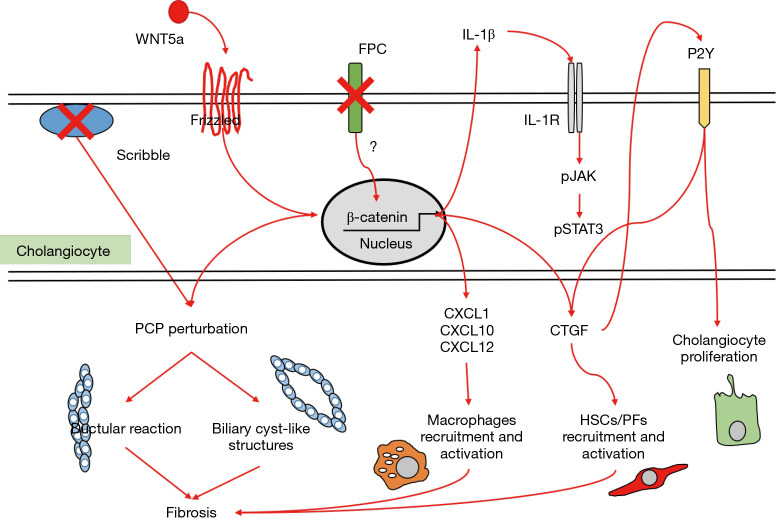Figure 2.
Main molecular mechanisms contributing to cyst development, which act through deregulation of planar cell polarity, stimulation of cholangiocyte proliferation and activation of inflammatory cells and myofibroblasts in the peribiliary area. They involve a complex interplay of numerous cytokines, chemokines, growth factors and morphogens, regulated by β-catenin and pJAK/STAT3 signaling. Of note, perturbation of planar cell polarity may lead to ductular reaction or cyst-like structure formation, accompanied by progressive peribiliary fibrosis. See text for details. FPC, fibrocystin/polyductin; PCP, planar cell polarity; CTGF, connective tissue growth factor; HSCs, hepatic stellate cells; PFs, portal fibroblasts.

